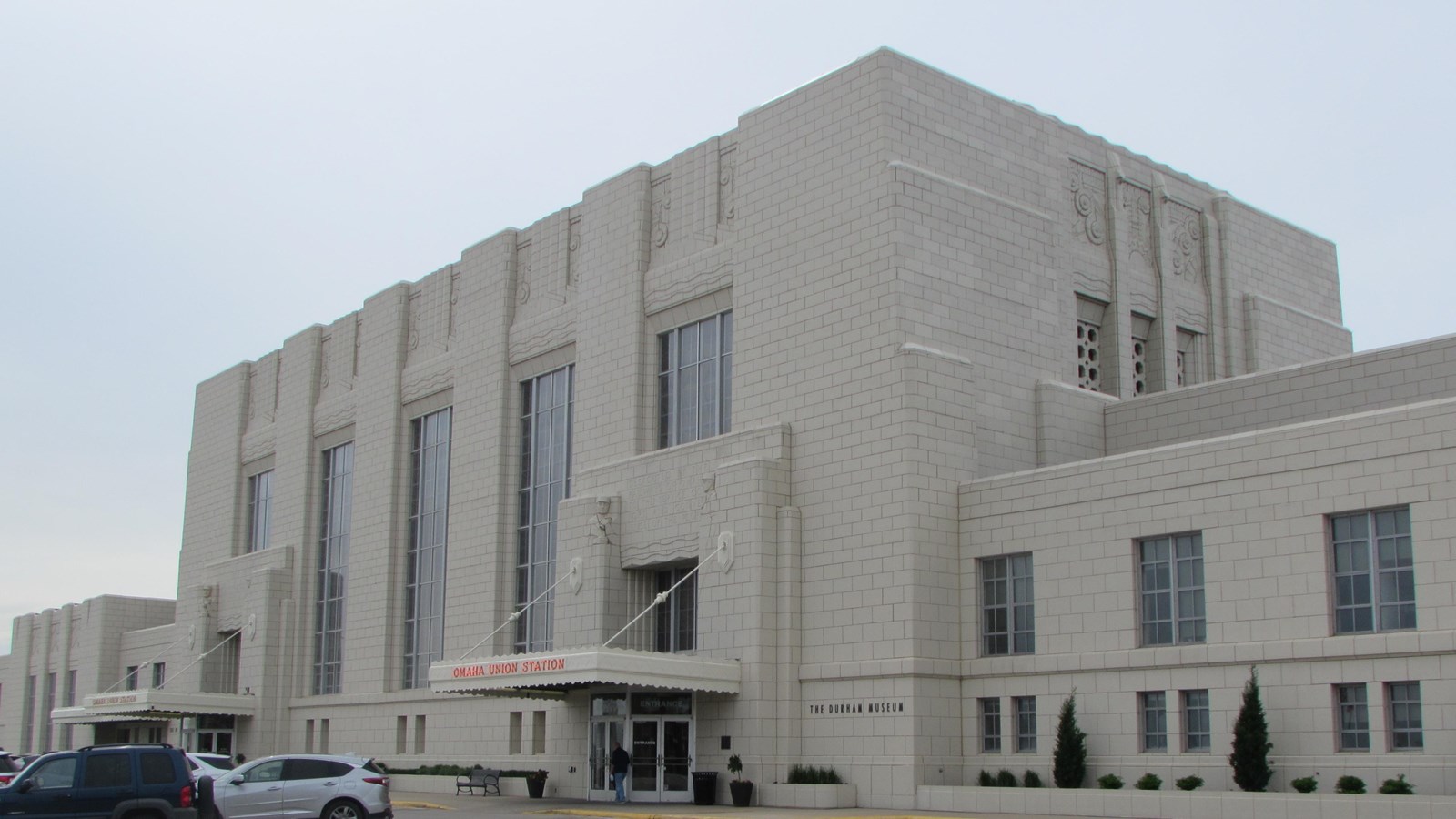Last updated: September 8, 2022
Place
Omaha Union Station

David Calease, NPS
Quick Facts
Location:
801 South 10th Street
Significance:
Transportation; Architecture
Designation:
National Historic Landmark; National Register of Historic Places; Omaha Local Landmark
MANAGED BY:
Durham Museum
Omaha Union Station is one of the finest examples of the Art Deco style in the Midwest and pays homage to the importance of railroad travel in Omaha.
Union Station was designed by Gilbert Stanly Underwood of Los Angeles and completed in 1931 by the Omaha firm Peter Kiewit and Sons. The steel frame structure is covered with glazed terra cotta. Sculpted figures of a brakeman, locomotive engineer, civil engineer, and railroad mechanic over the entrances capture the distinct character of the railroad. It is an excellent example of Midwestern Art Deco style and was the Union Pacific’s first railroad station in that style. The station cemented Omaha as an important railroad hub in the West and served not only the Union Pacific, but also the Chicago and North Western; Wabash; Missouri Pacific; Chicago Great Western; Rock Island; and the Milwaukee Road railroads.
After closing its doors to passengers in 1971, Union Pacific donated the station to the City of Omaha in 1973. The Western Heritage Museum operated in the building from 1975 to 1997. That year, Charles and Marge Durham, civic leaders in Iowa and Nebraska, undertook a renovation of the building, adding mechanical features as well as restoring the great hall. Designated as a National Historic Landmark in 2016, the facility continues to undergo preservation efforts to this day. Now known as the Durham Museum, visitors can enjoy this architectural marvel while experiencing an array of permanent and traveling exhibits that document the history of the region.
This amazing property has been designated as a National Historic Landmark, listed in the National Register of Historic Places, and recognized as an Omaha Local Landmark.
Union Station was designed by Gilbert Stanly Underwood of Los Angeles and completed in 1931 by the Omaha firm Peter Kiewit and Sons. The steel frame structure is covered with glazed terra cotta. Sculpted figures of a brakeman, locomotive engineer, civil engineer, and railroad mechanic over the entrances capture the distinct character of the railroad. It is an excellent example of Midwestern Art Deco style and was the Union Pacific’s first railroad station in that style. The station cemented Omaha as an important railroad hub in the West and served not only the Union Pacific, but also the Chicago and North Western; Wabash; Missouri Pacific; Chicago Great Western; Rock Island; and the Milwaukee Road railroads.
After closing its doors to passengers in 1971, Union Pacific donated the station to the City of Omaha in 1973. The Western Heritage Museum operated in the building from 1975 to 1997. That year, Charles and Marge Durham, civic leaders in Iowa and Nebraska, undertook a renovation of the building, adding mechanical features as well as restoring the great hall. Designated as a National Historic Landmark in 2016, the facility continues to undergo preservation efforts to this day. Now known as the Durham Museum, visitors can enjoy this architectural marvel while experiencing an array of permanent and traveling exhibits that document the history of the region.
This amazing property has been designated as a National Historic Landmark, listed in the National Register of Historic Places, and recognized as an Omaha Local Landmark.
